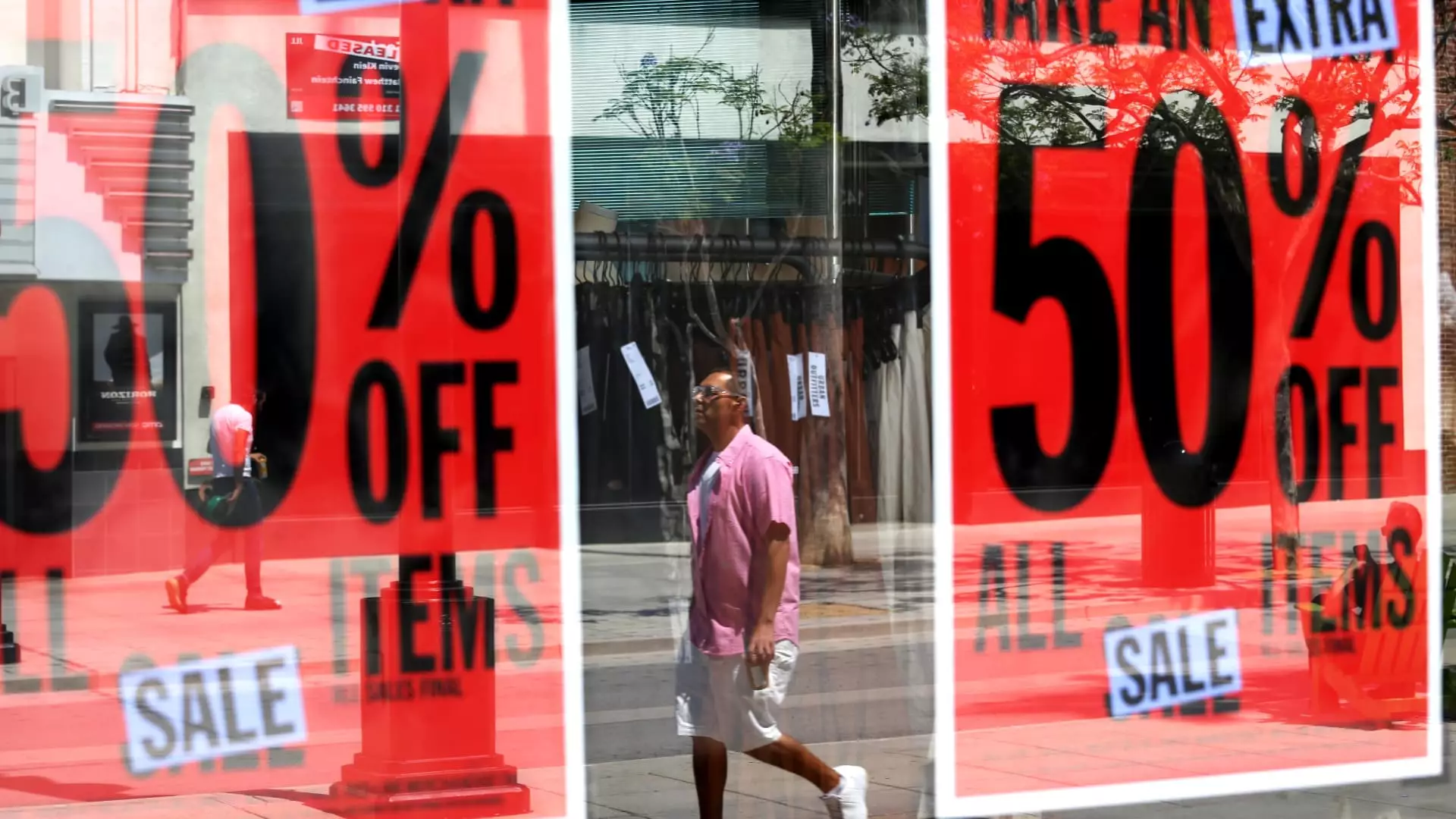The ongoing trade tensions fueled by former President Donald Trump’s administration have plunged the retail industry into an uncertain abyss. Retailers stand at a precarious crossroads, caught between the impending economic fallout of rising tariffs and the immediate necessity of maintaining consumer engagement. As these businesses brace for a potential downturn in consumer spending, a curious trend has emerged: they’re using the uncertainty surrounding tariffs as a marketing tool. Instead of simply adapting their strategies or stabilizing their pricing structures, brands from Beis to Fashion Nova are framing their promotions around impending price hikes, urging customers to act fast before tariffs kick in and their financial lifeboat springs a leak.
For many businesses, the fear of being caught off-guard by unpredictable tariff rates translates into marketing campaigns designed to create a sense of urgency. The stark reality remains, however, that for companies reliant on discretionary spending, this is more than just a fleeting marketing strategy—it’s a lifeline in turbulent waters.
The Psychological Pricing Games
One staggering aspect of this retail phenomenon is the extent to which companies are willing to cut prices in anticipation of rising costs. Brands like Bare Necessities, for example, have boldly advertised “pre-tariff sales,” suggesting discounts of up to 30% as they urge consumers to “stock up before tariffs hit.” Questions arise: Are these discounts merely a savvy marketing tactic, or are they indicative of more profound challenges facing small and mid-sized retailers?
Psychologically, consumers respond to promotions as if they are being offered a limited-time opportunity. By framing their sales practice around the impending doom of rising tariffs, retailers are tapping into a collective anxiety that extends beyond simple economics. They are creating a scenario where immediacy trumps rational decision-making, urging shoppers to buy now in a frenzy of self-preservation.
The Struggles of Smaller Brands
While larger retailers like Walmart can leverage global supply chains to counteract the impacts of tariffs, smaller businesses have a much steeper hill to climb. The University of Babson’s Lauren Beitelspacher posits that smaller enterprises, with their limited supply chain options, are disproportionately affected by tariffs. This inequity is a thorny issue that reveals the fragility of smaller retailers’ positions amidst this crisis.
The juxtaposition of scale and resilience reflects a troubling reality: smaller brands may not have the luxury of weathering storms like their larger counterparts. As they scramble to maintain cash flow in the face of declining consumer spending, many are left vulnerable to the whims of tariff adjustments that can single-handedly alter their financial outlook.
Turning Uncertainty into Opportunity
Interestingly, the looming possibility of increased prices has sparked a peculiar uptick in consumer spending for some major purchases, as evidenced by a considerable rise in sales data for big-ticket items. The notion that urgency around tariffs is brightening an otherwise quiet spending landscape confounds traditional economic expectations. Yet, it underscores the stark reality of consumers facing turbulence: those in a position to purchase are feeling the market pressure and responding accordingly, perhaps out of foresight or just as a strategic maneuver against inflation.
Brands are thus employing a mix of humor and irritation to navigate this complex conversation about tariffs—some, like Beis, have embraced lightheartedness to address fears about rising prices while still pushing the urgency of acting immediately to stakeholders. Their messaging—laced with humor but underscored by confusion—serves as both a call to action and a means to humanize the retailer-consumer relationship amidst political upheaval.
A Complex Intersection of Commerce and Politics
The curiously political dimension of tariffs has left brands in a challenging position when tasked with promoting their products without alienating customers. Barbara Kahn from The Wharton School notes that by using humor, companies attempt to diffuse geopolitical tensions and maintain a business-as-usual demeanor. This approach raises the question of whether it is the responsibility of retailers to remain apolitical or if a conscious effort toward transparency about their predicaments is warranted.
Regardless, the broader implications reflect how economic policies spill over into the very fabric of everyday life. Tariffs are no longer just a line in a government ledger; they have become a vital part of consumer decision-making, compelling brands to pivot their marketing strategies to either shield them from fallout or drive immediate sales.
As uncertain as the future of retail appears, it is this turbulence that ultimately opens the door to creative reinvention. In these chaotic times, perhaps caution is proving to be a double-edged sword, offering both peril and potential as businesses seek to navigate the evolving landscape of a consumer economy trapped between demand and supply challenges bestowed by tariffs.


Leave a Reply